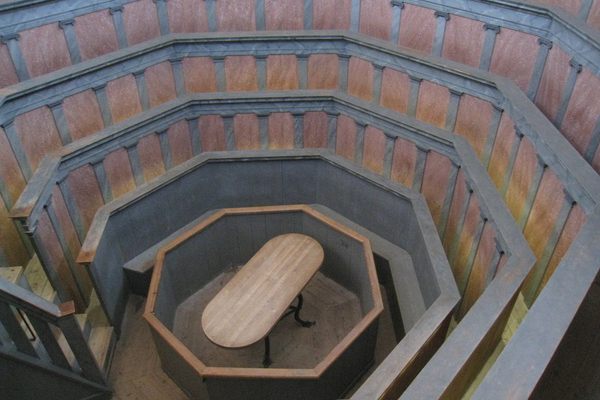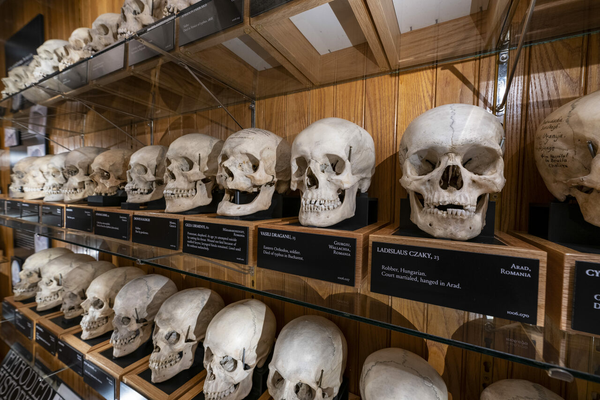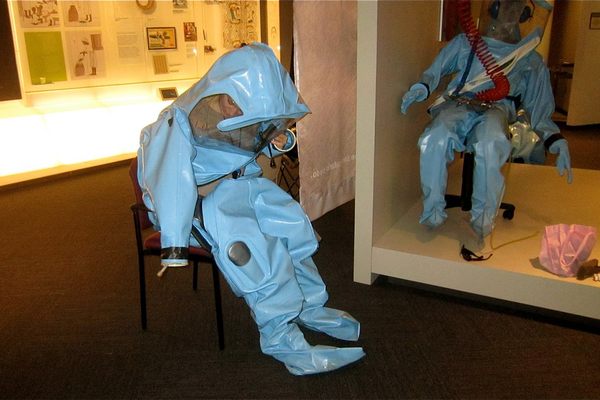The Most Beautiful Anatomical Theaters
Anatomical theaters were where students viewed dissections, scholars witnessed human anatomy, and surgeons explored new techniques of treatment. For patients, however, the time below the knife in the early days of medicine was unpleasant, with the option of opium, whiskey, or a mallet to the head being the main painkiller. Yet these theaters from the 16th, 17th, 18th, and 19th have an enduring beauty, where they were designed for natural light to filter in prior to electricity, and to present the human body as a thing of wonder.
Anatomical Theatre of the Archiginnasio
Bologna, Italy
photograph by Maria Firsova
Carved entirely from spruce in 1636, the anatomical theater at the University of Bologna in Italy was an early arena for dissection. Wooden statues on the walls represent physicians from history, while a canopy over the teacher’s chair is held aloft by representations of anatomical models. The gorgeous space was almost lost during World War II, but the pieces were saved from the rubble and reconstructed so visitors can experience the theater in a similar state to the 17th century.
photograph by Maria Firsova
Old Operating Theatre
London, England
photograph by Michael Reeve
The Old Operating Theatre in London’s St. Thomas Church was forgotten for a century until it was rediscovered in the mid-20th century and revived as a museum in 1962. The theater was opened in 1822, and the stately chamber was padded with sawdust so blood from operations wouldn’t leak on the churchgoers below. It’s the oldest surviving surgical theater in the UK.
photograph by John Pannell
Waag
Amsterdam, Netherlands
via Waag Society
Waag in Amsterdam is a 15th century building that was originally a city gate. In the 17th century part of it was turned into an anatomical theater for the surgeon’s guild. Over the entrance from the courtyard, you can still find the inscription “Theatrum Anatomicum.” In 1670, it was used as the setting of Adriaen Ruysch’s famous painting of the “Anatomy Lesson by Prof. Frederik Rusych.” Now the soaring space with its well-windowed dome is used by the Waag Society, which encourages experimentation and discussion in art, science, and technology.
photograph by Frank Boyd
Sala Gimbernat
Barcelona, Spain
The red-draped walls and marble operating table of Barcelona’s Sala Gimbernat date to 1762. In the 18th century, the Royal College of Surgery employed it for anatomy instruction using the dissection of corpses. Now on Wednesday mornings, visitors can stand in awe of the grand anatomical theater.
Palazzo del Bo
Padua, Italy
photograph by Kalibos/Wikimedia
Built in 1594, the anatomical theater in the Palazzo del Bo at the University of Padua in Italy is the oldest surviving such space in the world. Its six tiers carved from walnut wind around in a soaring circle. There is in place an inscription in Latin: ”Hic locus ubi mors east gaudet succurrere vitae,” or “This is a place where the dead are pleased to help the living.”
Ether Dome
Boston, Massachusetts
In 1846 in Boston, dentist Dr. William T.G. Morton administered the ether and surgeon John Collins Warren performed a revolutionary operation where he removed a tumor from a man’s neck using ether, the first time it was administered in surgery. Now the Ether Dome, used from 1821 to 1868, remembers Morton in its name. The striking operating theater is much as he left it, with light streaming down from its copper dome.
Tieranatomisches Theater
Berlin, Germany
photograph by Matthias Heyde
King Frederik William II ordered the creation of the veterinary medicine school in Berlin with its anatomical theater in 1787. It’s now the city’s oldest academic building. Along the dome built with an illuminating truss structure are representations of animals and the countryside, witnesses to numerous animal dissections over the years.
Indiana Medical History Museum
Indianapolis, Indiana
photograph by Huw Williams
Located in the old pathology building of the Central State Hospital for the Insane, the Indiana Medical History Museum preserves an autopsy amphitheater in much the same state as it was left in 1896. It’s now the oldest surviving pathology facility in the United States.
photograph by Meddlingwithnature/Wikimedia
Gustavianum Museum
Uppsala, Sweden
photograph by Dvortygirl/Flickr user
Located in what’s now the Gustavianum Museum in Uppsala, Sweden, is the world’s second oldest operating theater. It was constructed in the mid-17th century as part of Uppsala University. Its muted-hued viewing tiers descend down to an octagon operating area.
photograph by Celeste Lindell
Pennsylvania Hospital
Philadelphia, Pennsylvania
The oldest operating theater in the United States is at the Pennsylvania Hospital in Philadelphia. Known as the “dreaded circular room,” it was used from 1804 to 1868, and only on sunny afternoons when enough light came through the windows. Visitors are now welcome, and this May 17, Atlas Obscura will be exploring the old theater as part of our Philadelphia road trip.
Update, 10/5: An earlier version misstated who performed an important surgery. It was John Collins Warren, not William T.G. Morton.





















Follow us on Twitter to get the latest on the world's hidden wonders.
Like us on Facebook to get the latest on the world's hidden wonders.
Follow us on Twitter Like us on Facebook